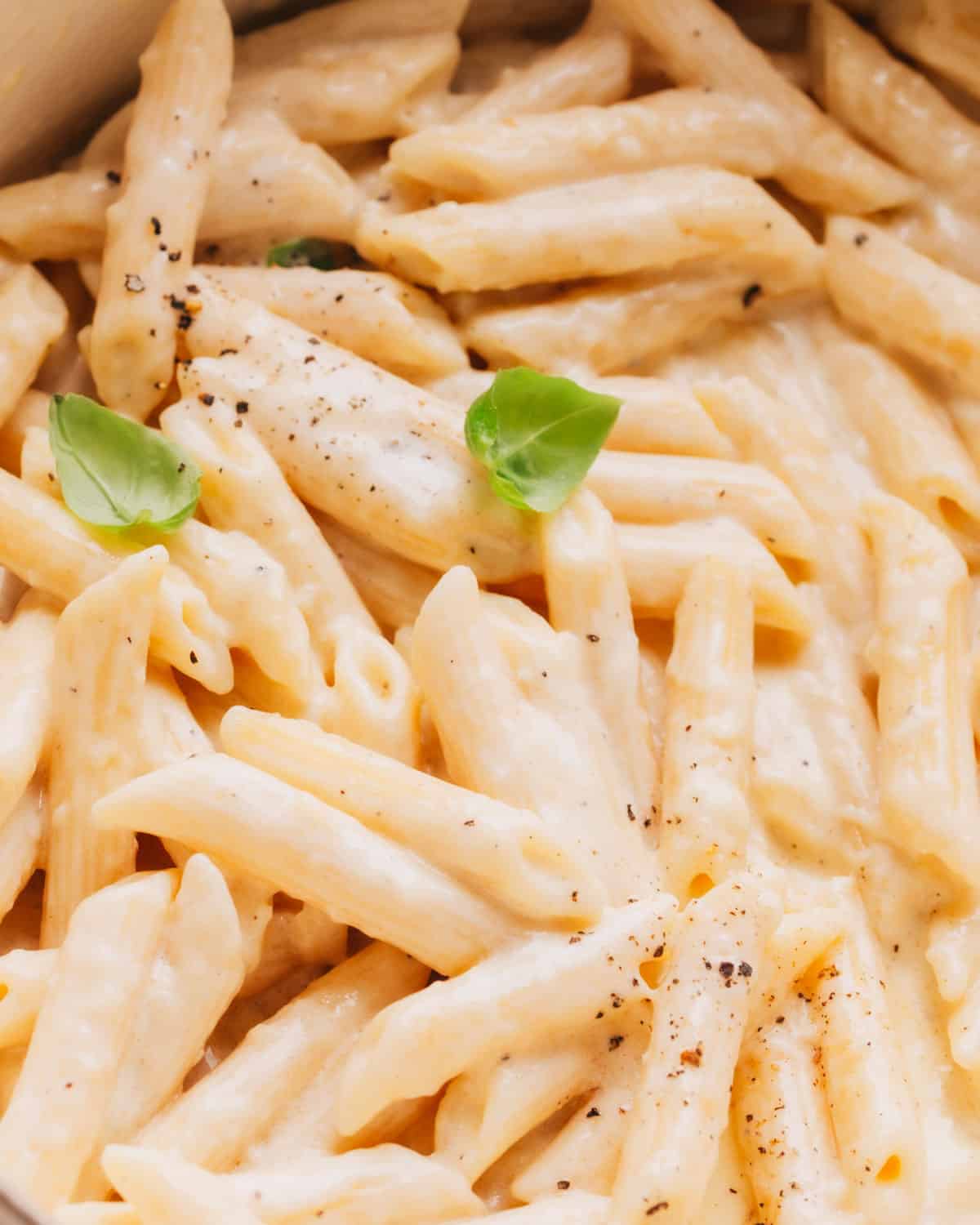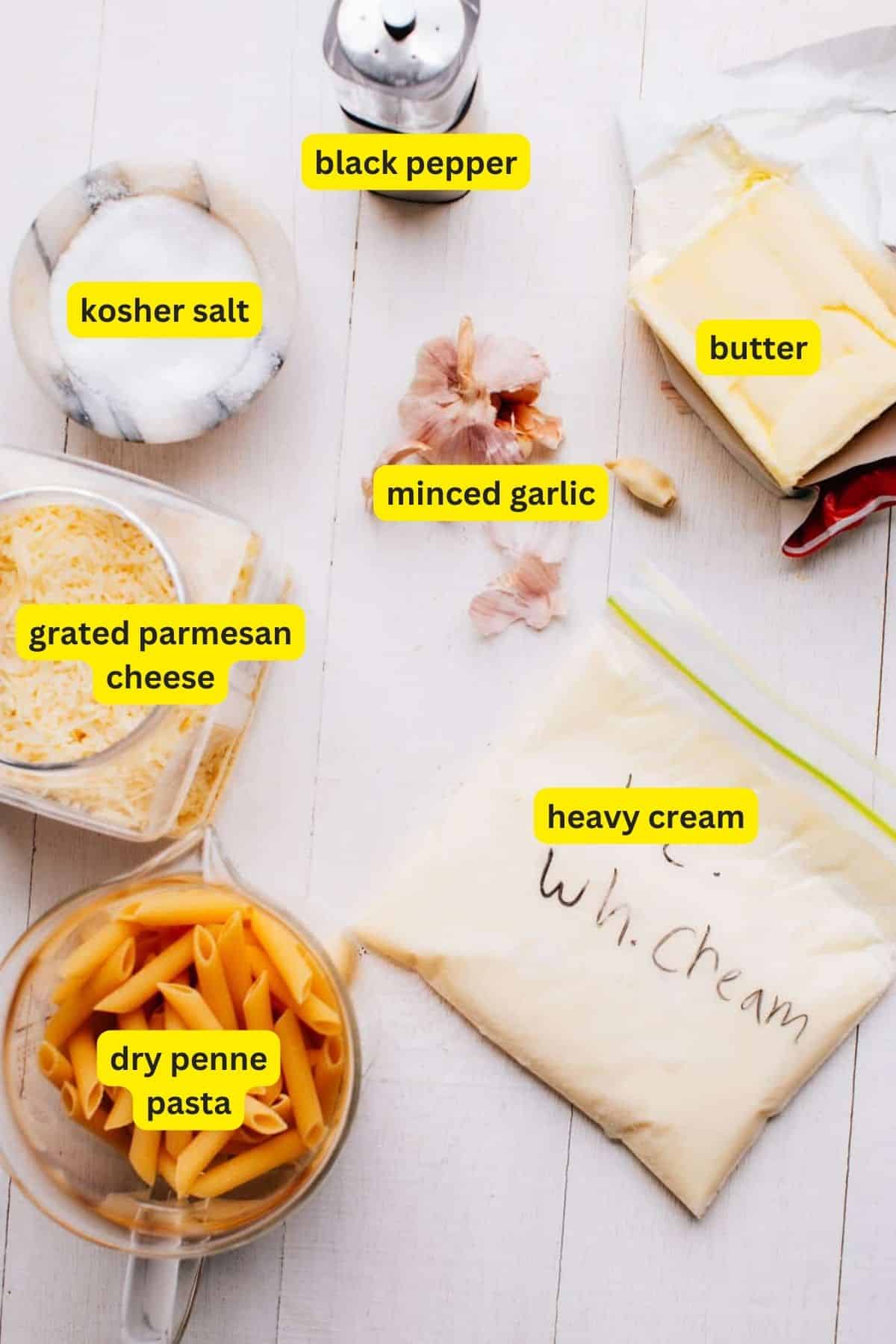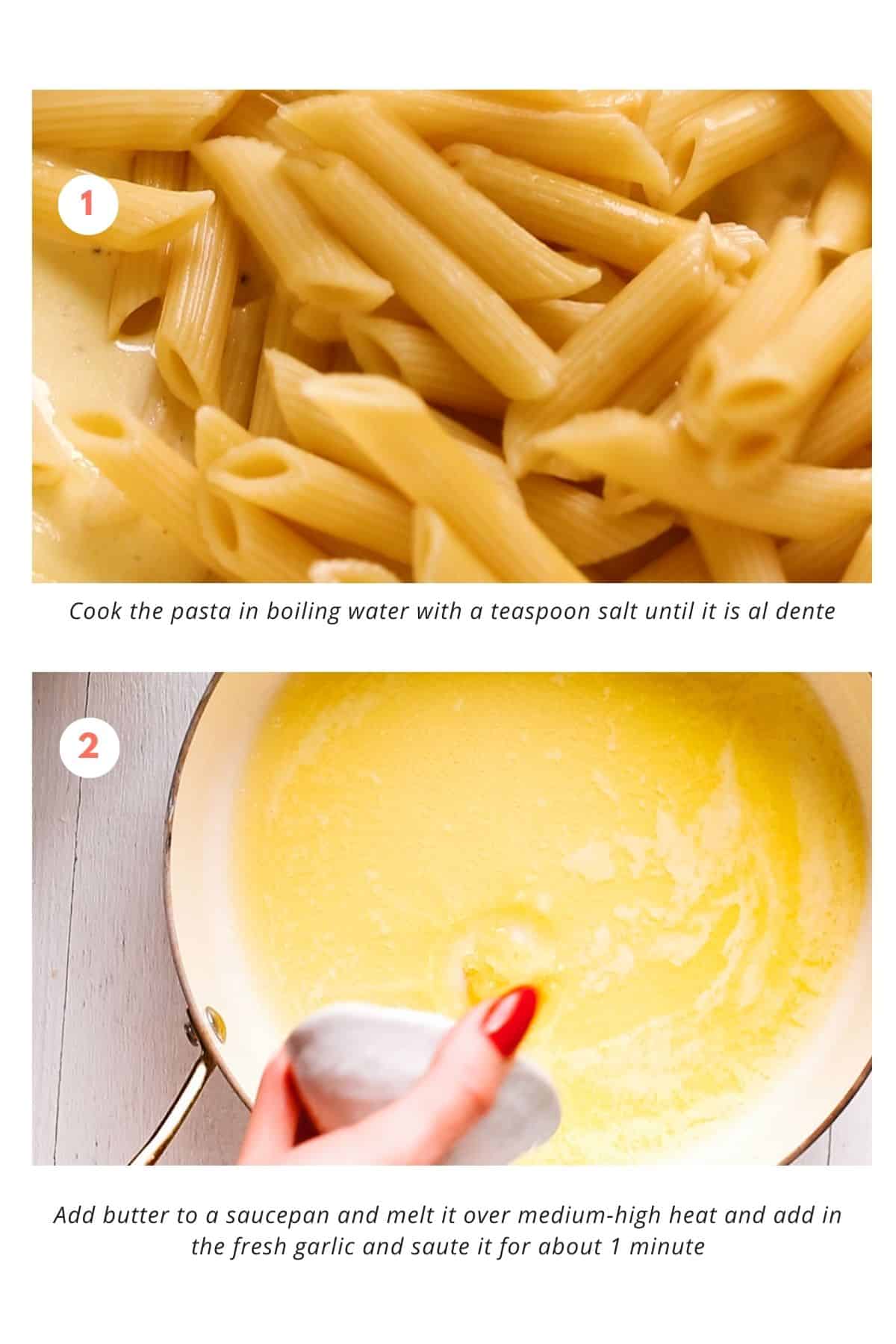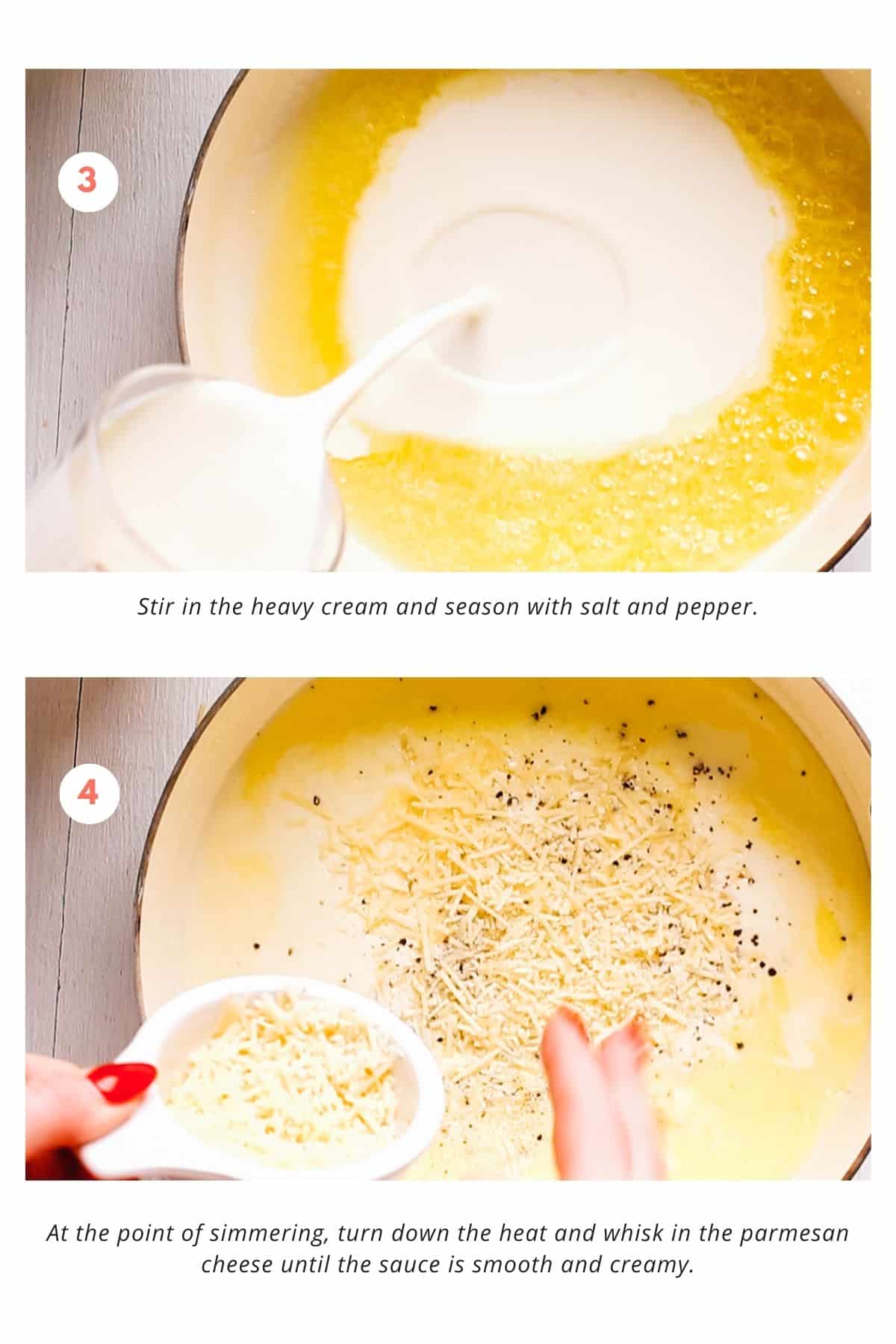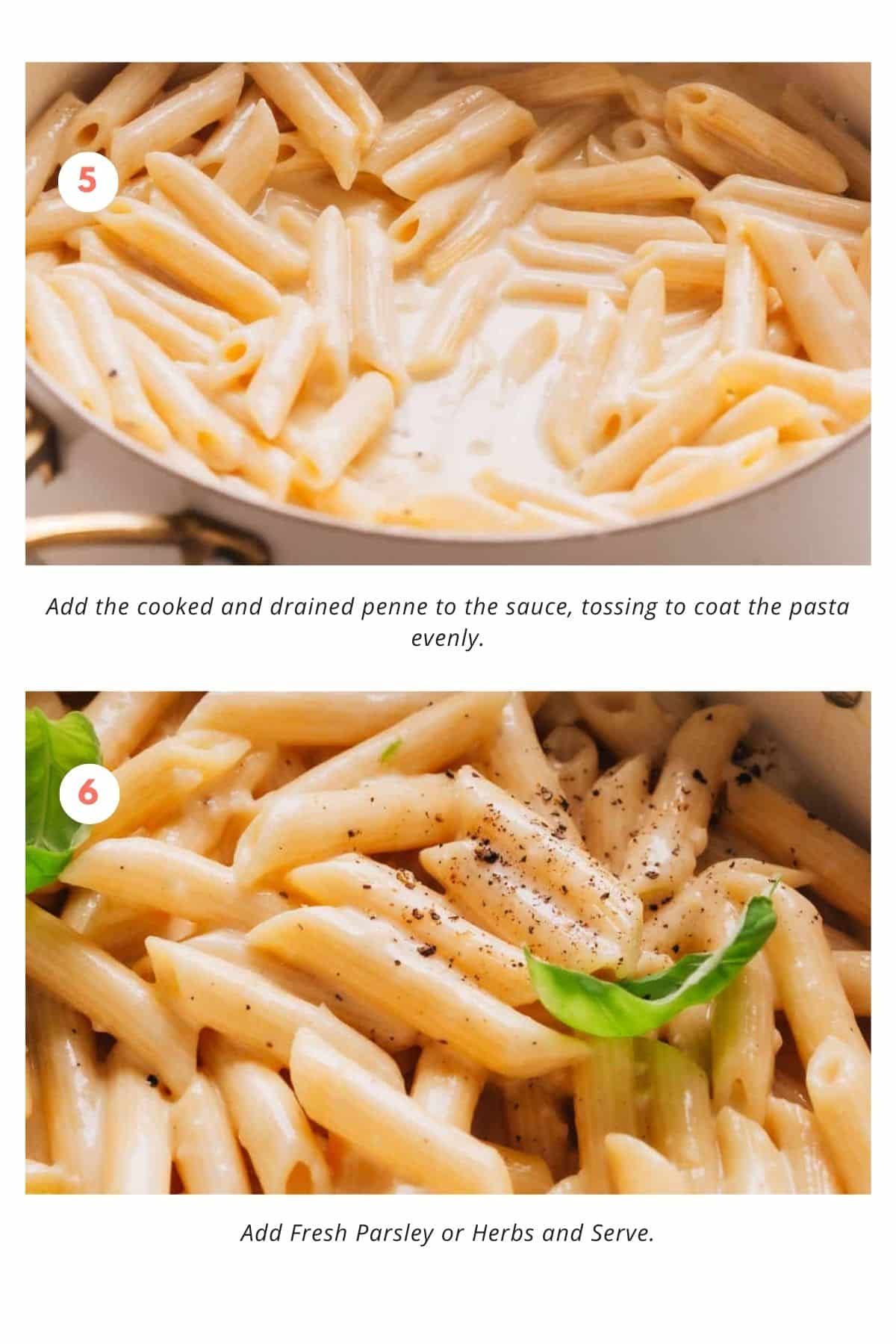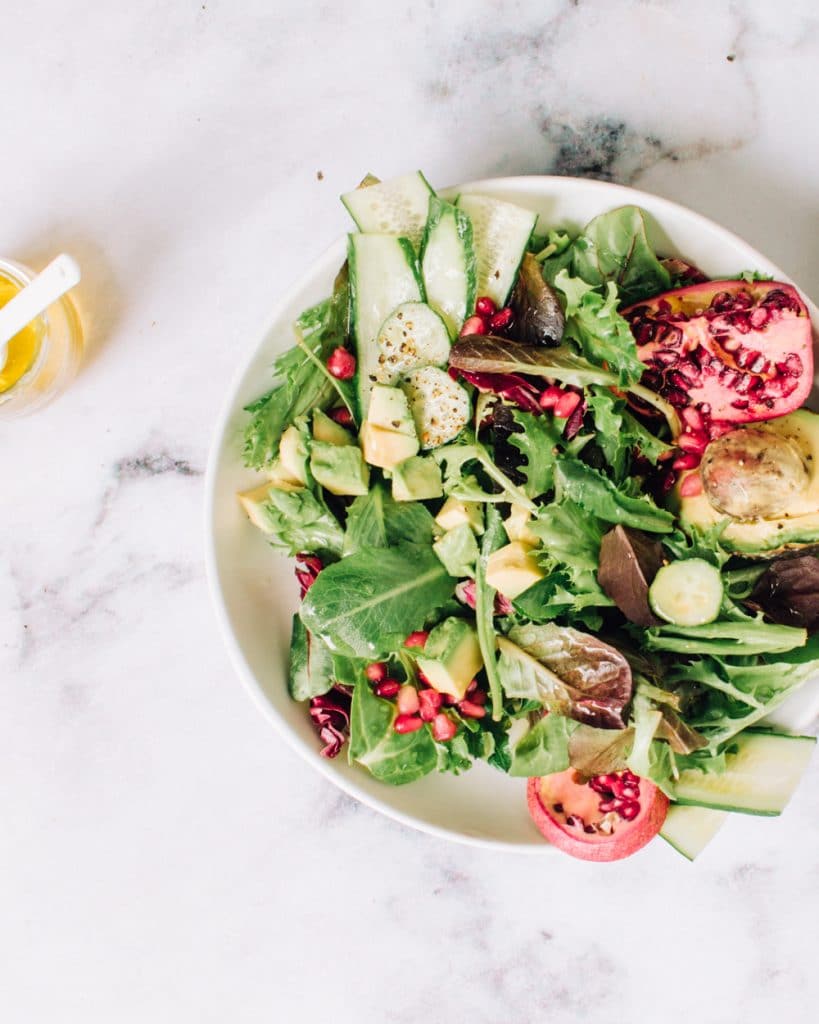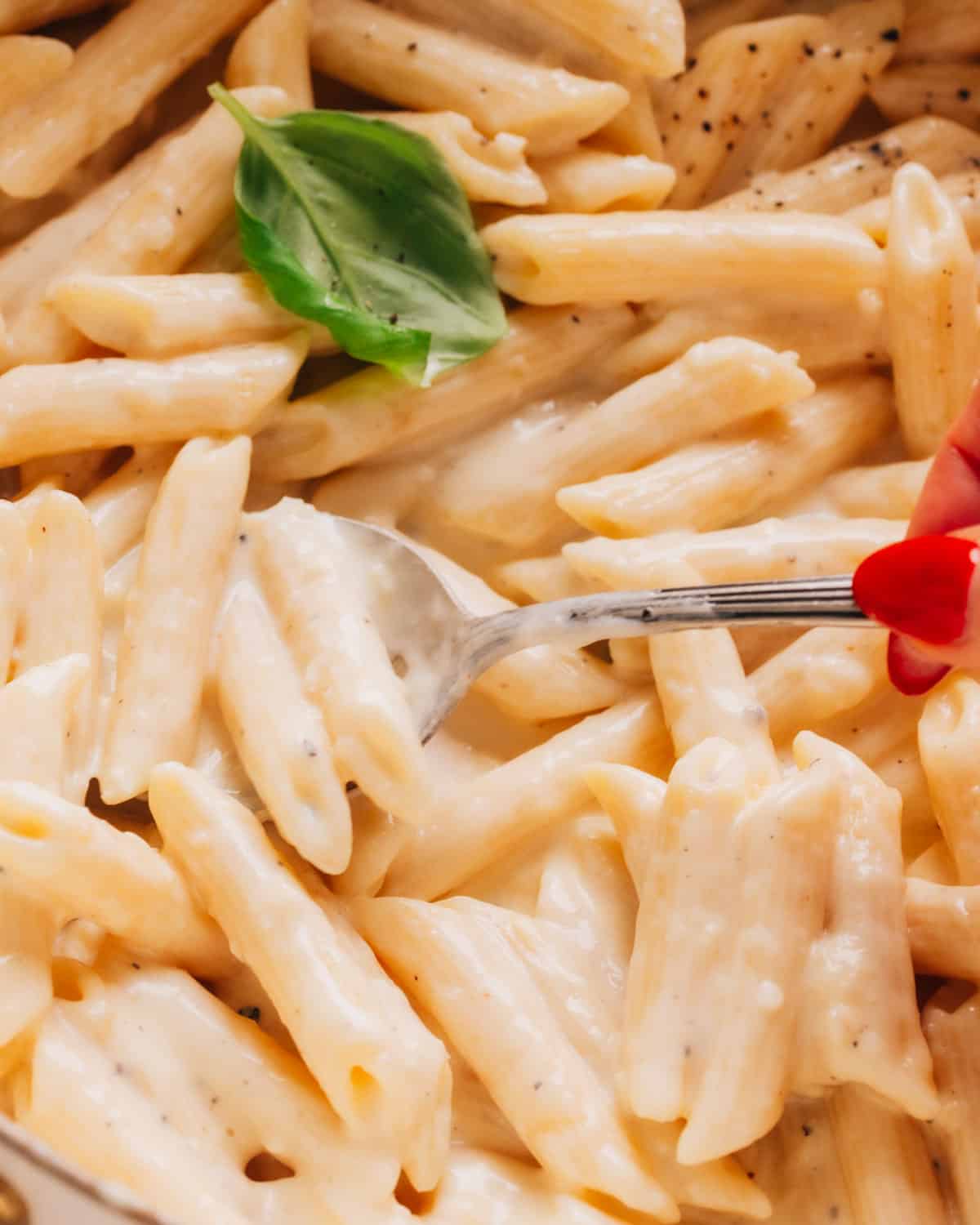May 02, 2024, Updated Aug 15, 2024 NEXT READING: Good Sides for Pasta (Your Guide to the Best Pasta Side Dishes!)
Creamy indulgence: This recipe delivers a luxuriously creamy Alfredo sauce that coats each penne pasta perfectly. Quick and easy: With simple ingredients and straightforward instructions, this recipe is fuss-free. Customizable: You can easily customize this dish by adding your favorite proteins, such as grocery store rotisserie chicken, ham, shrimp, pancetta, or sausage, as well as vegetables, like broccoli, spinach, or sun-dried tomatoes. A make-ahead option: The Alfredo sauce can be made and stored in the refrigerator, making it convenient for meal prep or entertaining guests. Simply reheat the sauce and toss it with freshly cooked penne pasta when ready to serve. Family-friendly: Your kids will be dishing up seconds, so double up.
Let’s make it!
Ingredients
These are the basics to gather for your penne Alfredo:
Minced garlic: Fresh garlic adds a rich and pungent flavor to the sauce. Heavy cream: 35% milkfat, a.k.a. whipping cream or double cream. Black pepper and kosher salt: Don’t skip the seasoning – your sauce needs to be well-seasoned. Finely-grated Parmesan cheese: Grate it finely to ensure it melts smoothly into the sauce, creating a creamy texture and adding a savory, nutty taste. While freshly grated cheese is preferred for its flavor and texture, you can substitute it with pre-grated Parmesan cheese if needed. However, the pre-grated cheese may not melt as smoothly into the sauce. Dry penne pasta: Penne pasta works well with Alfredo sauce, as its shape holds the creamy sauce nicely. Minced parsley for garnish: Fresh parsley adds color and freshness to the dish. You can use other fresh herbs if you like. Butter: For sauteing the garlic.
Substitutions
Evaporated Milk: If you prefer a lighter sauce, try evaporated milk. It’s thicker than regular milk and less likely to curdle under heat. You can use it as a one-to-one substitute for heavy cream. Garlic powder: If fresh garlic is not on hand, you can substitute it with garlic powder. Use about 1/2 teaspoon of garlic powder for every clove of garlic called for in the recipe. Other pasta shapes: Feel free to use different pasta shapes instead of penne noodles. Fettuccine, linguine, or spaghetti are classic choices for Alfredo sauce. Herby infusion: Infuse other fresh herbs like thyme, fresh basil, oregano or rosemary. You could even use a little italian seasoning, if you like. Simmer the herbs in the sauce for a few minutes to release their aroma before serving. Vegetable additions: Add vegetables like broccoli, spinach, peas, or sun-dried tomatoes. Sauté or steam the vegetables before adding them to the sauce.
Large pot: To cook the pasta in. Saucepan: To make the sauce in. Whisk
Cook the pasta
Start by cooking the pasta in boiling water with a teaspoon salt until it is al dente. Just follow the package instructions to cook the penne pasta (usually 8-10 minutes). Drain the pasta in a colander.
Make the sauce base
While the pasta is boiling, add the butter to a saucepan and melt it over medium-high heat. Add in the fresh garlic and saute it for about 1 minute. Keep an eye out so it doesn’t overcook. Lastly, stir in the heavy cream and season with salt and pepper. Simmer gently over a low heat.
Add the cheese
At the point of simmering, turn off the heat and whisk in the parmesan cheese until the sauce is smooth and creamy.
Finish the dish
Add the tender cooked pasta (fully drained) to the sauce, tossing to coat the pasta evenly.
Make ahead
You can make the Alfredo sauce ahead of time and store it in jars or an airtight container in the refrigerator for up to 2 days. When ready to serve, reheat the Alfredo sauce in a saucepan over low heat until warmed through. You may need to add a splash of milk or cream to loosen the sauce if it has thickened in the refrigerator. Once the sauce is heated, add the cooked penne pasta and toss gently until the pasta is coated and heated through.
Storing Alfredo Sauce with Penne Pasta
Leftover Alfredo sauce with penne pasta can be stored in an airtight container in the fridge for up to 3-4 days.
Allow the pasta to cool completely before transferring it to the container. When reheating, you may need to add a little extra cream or milk to the sauce to prevent it from drying out. You can reheat it on the stovetop in a skillet or in the microwave.
While Alfredo sauce can be frozen, it may lose its texture when frozen and reheated.
To Freeze: Transfer the cooled Alfredo sauce to a freezer-safe container, leaving some room for expansion, and store it in the freezer for up to 2-3 months.
To lighten the meal a little, serve a crunchy green salad or a strawberry spinach salad with almonds.
Other Pasta Recipes You’ll Love
Try these other fan-favorite pasta dishes to try:
Grate cheese finely: Grate the Parmesan cheese finely to ensure it melts smoothly into the sauce, creating a creamy texture. Pre-grated cheese often contains anti-caking agents that can affect the texture of the sauce. Adjust consistency: If the sauce is too thick, add a splash of pasta water or cream to thin it out. If it seems too thin, let it stand for a few minutes. It thickens right up as it rests a bit. Serve immediately:Alfredo sauce is best served immediately after tossing with the pasta to prevent the sauce from thickening up too much. Cheese melting: Cheese contains proteins and fats that change when heated. When making Alfredo sauce, melting the cheese slowly and gradually over low heat helps prevent it from becoming grainy or stringy.
Lobster Ravioli Sauce Seafood Pasta with Cream Sauce Beet Pasta Sauce Butternut Squash Alfredo Asiago Tortelloni Alfredo with Grilled Chicken
